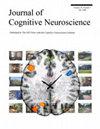Early Electrophysiological Correlates of Perceptual Consciousness Are Affected by Both Exogenous and Endogenous Attention
IF 3
3区 医学
Q2 NEUROSCIENCES
引用次数: 0
Abstract
It has been proposed that visual awareness negativity (VAN), which is an early ERP component, constitutes a neural correlate of visual consciousness that is independent of perceptual and cognitive mechanisms. In the present study, we investigated whether VAN is indeed a specific marker of phenomenal awareness or rather reflects the involvement of attention. To this end, we reanalyzed data collected in a previously published EEG experiment in which awareness of visual stimuli and two aspects that define attentional involvement, namely, the inherent saliency and task relevance of a stimulus, were manipulated orthogonally. During the experimental procedure, participants (n = 41) were presented with images of faces that were backward-masked or unmasked, fearful or neutral, and defined as task-relevant targets or task-irrelevant distractors. Single-trial ERP analysis revealed that VAN was highly dependent on attentional manipulations in the early time window (140–200 msec), up to the point that the effect of awareness was not observed for attentionally irrelevant stimuli (i.e., neutral faces presented as distractors). In the late time window (200–350 msec), VAN was present in all attentional conditions, but its amplitude was significantly higher in response to fearful faces and task-relevant face images than in response to neutral ones and task-irrelevant ones, respectively. In conclusion, we demonstrate that the amplitude of VAN is highly dependent on both exogenous (stimulus saliency) and endogenous attention (task requirements). Our results challenge the view that VAN constitutes an attention-independent correlate of phenomenal awareness.知觉意识的早期电生理相关性受外源性和内源性注意力的影响
有人提出,视觉意识负性(VAN)是ERP的早期成分,它是视觉意识的神经相关因素,与知觉和认知机制无关。在本研究中,我们探讨了 VAN 是否确实是现象意识的特定标记,还是反映了注意力的参与。为此,我们重新分析了之前发表的一项脑电图实验中收集的数据,在该实验中,视觉刺激的意识和注意力参与的两个方面(即刺激的固有显著性和任务相关性)被正交操纵。在实验过程中,参与者(n = 41)看到的人脸图像是向后遮蔽或未遮蔽、恐惧或中性的,并被定义为与任务相关的目标或与任务无关的干扰物。单次ERP分析表明,在早期时间窗(140-200毫秒)内,VAN高度依赖于注意操作,直到在注意无关刺激(即作为干扰物呈现的中性人脸)上观察不到意识效应。在晚期时间窗(200-350 毫秒)中,VAN 在所有注意条件下都存在,但其对恐惧面孔和任务相关面孔图像的反应幅度分别显著高于对中性面孔和任务无关面孔图像的反应幅度。总之,我们证明了 VAN 的振幅高度依赖于外源性注意(刺激显著性)和内源性注意(任务要求)。我们的研究结果对 VAN 是现象意识中与注意无关的相关因素这一观点提出了质疑。
本文章由计算机程序翻译,如有差异,请以英文原文为准。
求助全文
约1分钟内获得全文
求助全文
来源期刊
CiteScore
5.30
自引率
3.10%
发文量
151
审稿时长
3-8 weeks
期刊介绍:
Journal of Cognitive Neuroscience investigates brain–behavior interaction and promotes lively interchange among the mind sciences.

 求助内容:
求助内容: 应助结果提醒方式:
应助结果提醒方式:


